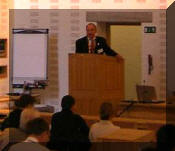 After presenting a
technical talk on "Managing Shielding Gas," at a conference in
Denmark, an interesting question was asked during the discussion?
After presenting a
technical talk on "Managing Shielding Gas," at a conference in
Denmark, an interesting question was asked during the discussion?
Are their more elaborate systems available that control and save shielding
gas other than the Gas Saver System described?
The question is of
interest since it implies that our patented Gas Saver System is too simple
and more elaborate ways to solve this problem must exist!
In fact, more
elaborate systems that work are covered by our recent US Patents #'s
7,015,412 and 7,019,428!
SEE BELOW
The following are some
devices that have been tried but create more problems then they attempt to
solve and are often rejected: